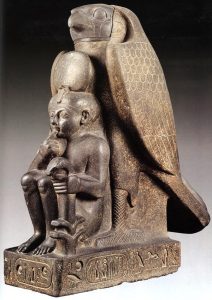Who the god Hauron is?
Hauron was a Canaanite god. He originally belongs to Lebanon. Later, he was imported to Egypt. He was a desert & earth deity. Later. ancient Egyptians adopted Hauron in their religious pantheon.
How Hauron came to Egypt
It was the time period of the Middle Kingdom. During this time, Hauron had been mentioned in Egyptian texts in the form of a Canaanite theophoric name. But, it was the New Kingdom when he appeared as an Egyptian god. It was the during the reign of the pharaoh Amenophis II from when Hauron came into prominence in Egypt.
The victorious herdsman
According to Canaanite mythology, Hauron is the son of Astarte. The people who wandered the desert areas, as well as the herdsmen, were associated with this god. Thus, ancient Egyptians called him a victorious herdsman’. He was believed to protect cattle from the attacks of wild animals. Thus, people called him the ‘divine herdsman’.
Association with the Great Sphinx at Giza
The Great Sphinx of Giza showed the association of the god Hauron with it. But, the reason is not clear. Although, there may be a reason for this. Canaanite or Syrian workers lived near the Sphinx. This may be a reason. Otherwise, there may have been some mythological connections of what no evidence is available now.
The Iconography of Hauron
Speaking about iconography, Hauron has different types of representations. Usually, he is in anthropomorphic form as an armed man. But, his appearance may differ. He may be represented in a full animal form of a falcon. The best example of this type of representation is presently in the Egyptian Museum in Cairo. Here the Hauron is represented as a standing falcon. He is protecting the child form of the pharaoh Ramesses II.

The cult of Hauron
It was the time period of the New Kingdom. A temple was constructed in front of the Great Sphinx at Giza. This temple was known as the ‘house of Hauron’. In this temple, Hauron is in a composite form. Here he is a sun god. His name is Horemakhet-Hauron.